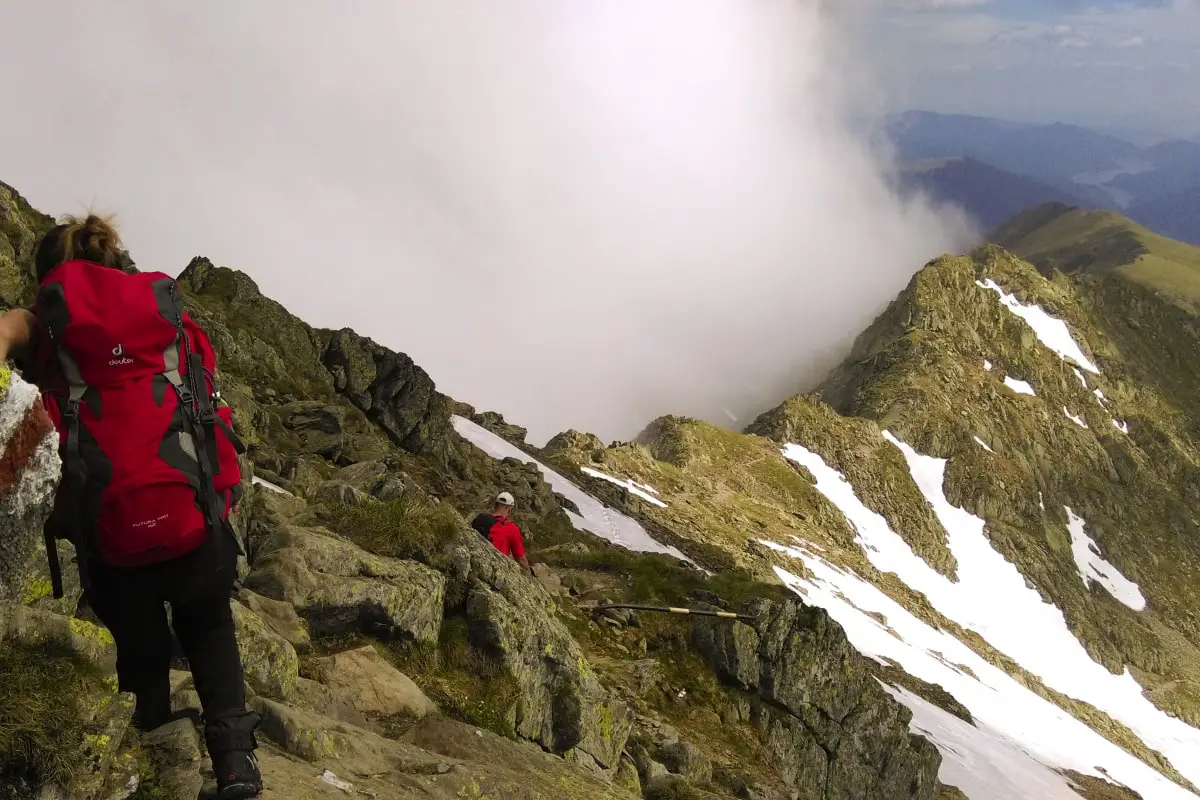Romania is the largest country in Southeastern Europe with a very rich and diverse geographic landscape. Going from the 2,500m high Carpathian Mountains to the Danube Delta, there are thirteen national parks and protected areas full of wildlife and rare vegetation. Despite all this, the country is not a popular hiking destination – which can be a good thing if you’re looking for off-the-beaten path trails with fewer tourists on them. Or a bad thing if you’re not prepared and don’t know what to expect!
Table of Contents
- 1. Spectacular Mountain Scenery
- 2. Impressive Natural Attractions
- 3. Wild Beauty and Picturesque Villages
Luckily, this article will give you a place to start. Because when it comes to hiking, Romania is an amazing destination that has surprised many people once they visited. With a comfortable climate, many ranges and trails to choose from for every experience level, lots of things to do for outdoor enthusiasts and, perhaps best of all, unspoiled and wild natural scenery – here are 3 reasons why Romania should be your next hiking destination.
1. Spectacular Mountain Scenery
The Carpathian Mountains stretch for almost 1,500km across many countries: Serbia, the Czech Republic, Poland, Slovakia and Ukraine. But a whopping 55% of these mountains are located in Romania. With this in mind it becomes quite clear that Romania is a hiker’s paradise. The Romanian Carpathians are divided into three main groups: Eastern, Southern and Western Carpathians, based on their geographic location.
Each one has its own highlights and reputation among hikers, boasting specific wildlife and vegetation diversity, natural attractions and outdoor activities people enjoy. When planning to go hiking in Romania it’s best to focus only on one of these groups because travelling between them is not easy or accessible.
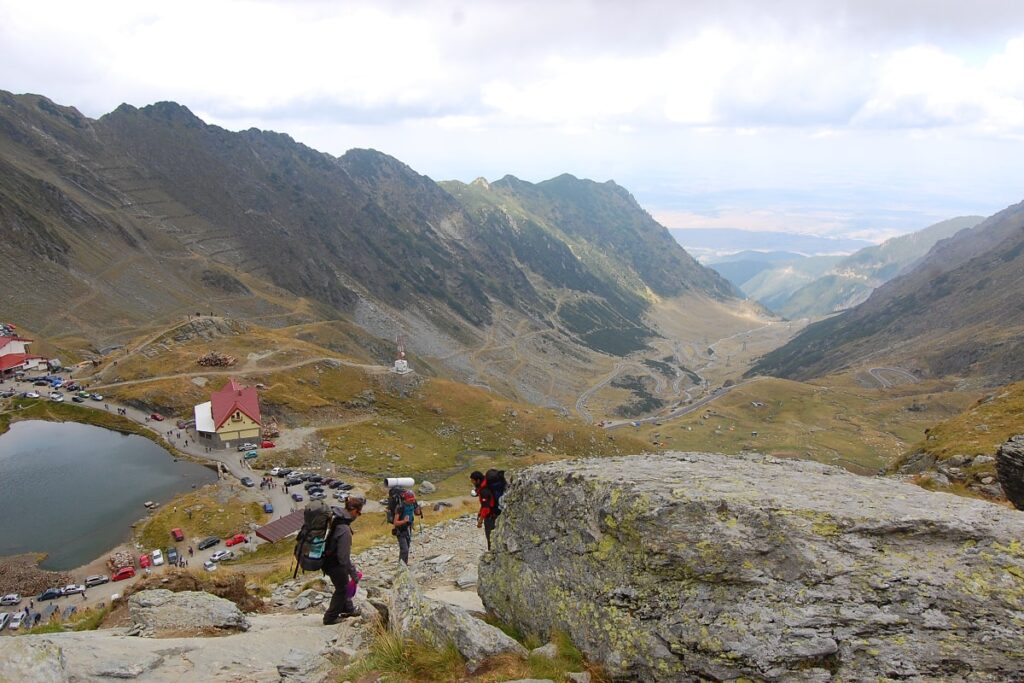
The Southern or Central Carpathians stretch from Brasov to Timisoara. They are home to the highest – and most challenging – peaks in the Romanian Carpathians, in the Fagaras and Retezat ranges. There are twelve peaks over 2,500m but beware that the Fagaras Mts. are the most challenging and dangerous mountains with rocky trails over ridges where one wrong step can cause accidents or even be fatal. We always recommend hiring an experienced hiking guide who can help you so you can enjoy the magnificent views. The best time to go hiking in this range is between late June and late October because outside of this period they’re covered in snow and the avalanche risk is high.
Fagaras Mts. is where Moldoveanu Peak is, the highest in Romania at an altitude of 2,544m. The route to the summit starts from Balea Lake at the top of the famous Transfagarasan Road and takes 3 days round-trip. The second highest peak is Negoiu standing at an elevation of 2,535m, only 9 meters shorter than Moldoveanu. The landscape is spectacular with two different topographic aspects: one rugged and shaped by glaciation, and the other formed by torrents and rivers that have dug valleys and rounded shapes. If you’re looking for a challenge, you can cross the Fagaras Mts. from East to West summiting these two and other peaks along the way. This trail will take 5 days or more, is suitable for a camping expedition and only for experienced hikers in very good physical condition.
Omu Peak in the Bucegi Mts. close to the popular tourist city of Brasov, is also one to add to your bucket list. Many popular tourist attractions are in the area, including the famous Bran Castle and Peles Castle. Accessing Bucegi Mts. is easy from Busteni or Sinaia and there is also a cable car taking you up to the plateau. When there you will also discover two famous natural attractions: the Sphinx and Babele rock formations that have been shaped by the elements over thousands of years. From the plateau, Omu Peak can be reached on a medium hike of 4 hours.
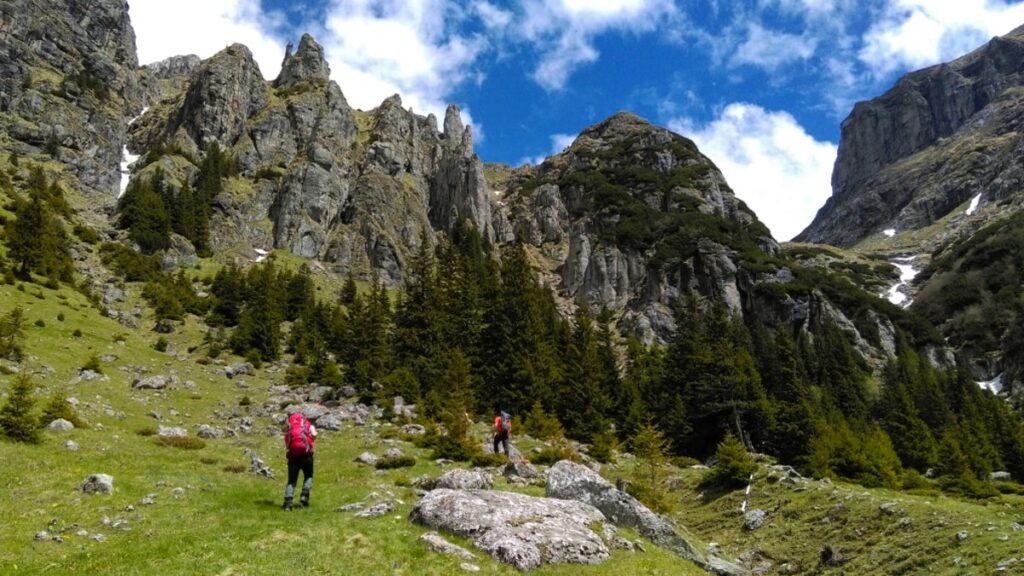
One of the most spectacular and picturesque mountain ranges close to Brasov is Piatra Craiului with its unmistakable limestone ridge scratching the horizon. You can start trails from Plaiul Foii or Curmătura Hut going all the way up on the ridge towards the highest peak, La Om at 2,136m. The footpath is somewhat precarious and unpredictable, but when you’re looking for an adventure that’s all part of the excitement. On the descent, the southern end will lead you through a series of caves you can explore and ultimately into the deep, entrancing Zarnesti Gorges. This is one of the most popular attractions in the area for a nice walk but also with steep walls ideal if you’re an avid rock climber – or want to become one.
Piatra Craiului is also home to a national park and if you’re a fan of admiring local flora and fauna, you can find hundreds of rare plants and butterfly species. And if you’re lucky, quiet and have good eyes you might even see wild animals such as the chamois, wolves, bears or lynxes roaming the mountains. Romania is home to 50% of Europe’s brown bears and 20% of its wolves.
2. Impressive Natural Attractions
In a different part of the country around the popular tourist city of Cluj-Napoca are the Western Carpathians filled with natural attractions. Cetățile Ponorului is spectacular and quite accessible on a 3-4 hour hike for individuals of all fitness levels. The trail to Piatra Grăitoare Peak starting from Vârtop has a higher level of difficulty and it’s not a good idea without hiking experience and a good physical shape. While the paths aren’t that difficult, the hike both ways can last over six hours.
However, there are other options not limited to hiking. Apuseni Mountains has roughly 400 caves. If you’re a fan of caving, you should visit Peștera Ghețarul de la Focul Viu or Bears’ Cave. The latter has received its name following the discovery of 140 cave bear skeletons on the premises. If you’ve never visited a glacier cave before then Scărișoara Cave will impress you. Considered one of the natural wonders of Romania, you’ll be left deeply impressed by the large cave chamber known as the Great Hall, as well as the Pool of Ice. Just remember to bring warm clothes, even if you’re visiting during the summer.
If you’re a fan of more extreme sports, you can try via ferrata. Of the many trails you can take the most popular ones are in Turda Gorge, Pietrele Negre or Pietrele Doamnei. Paragliding and mountain bike routes are also an option but you’ll need a local guide with equipment for that. And if you’re looking to just spend some quiet time with your loved ones in nature there are many unique guesthouses with spectacular views, delicious food and welcoming hosts waiting for you.
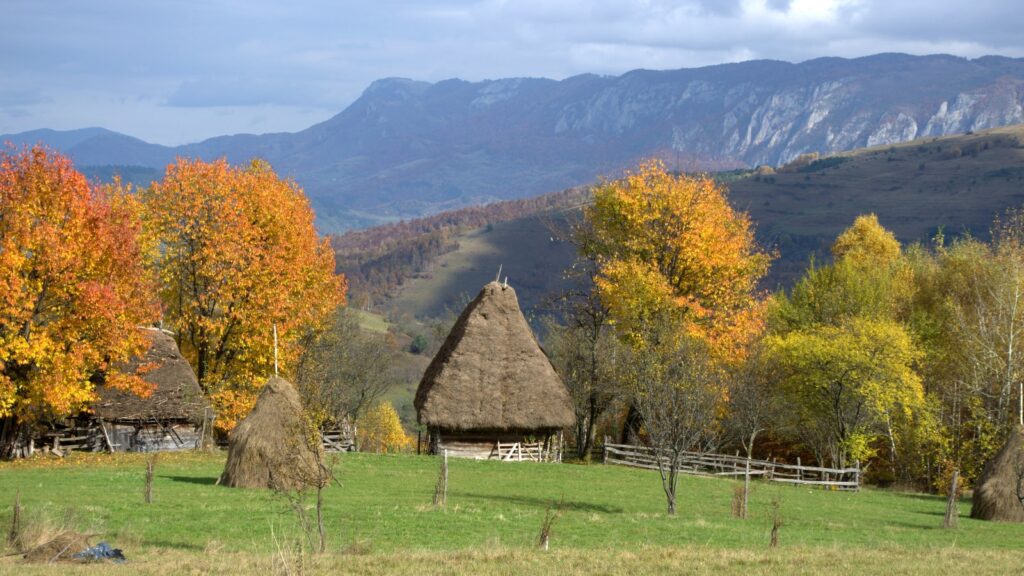
3. Wild Beauty and Picturesque Villages
If you are travelling to see impressive natural landscapes and take a couple of Instagram-able pictures, Romania will impress you. The Carpathians are wild and in many places untouched, making it ideal for a traveller who wants to disconnect from the busy world and rediscover peace and tranquility. This is what makes hiking in Romania such an immersive and unforgettable experience. And because not a lot of tourists visit Romania, especially in the mountains, you’ll be mostly alone and meet villagers here and there. So you’ll be alone in wild, spectacular landscapes which is very rare these days in Western countries!
Here are three famous sights you shouldn’t miss if you’re looking for natural beauty. First, the Red Lake with its serene waters and pristine beauty surrounded by woodlands will instantly calm your mind down. Then, the famous Transfăgărășan Road crosses the spectacular Fagaras Mountains at 2,100m altitude will blow you away with contrasting landscapes. Finally, Zarnesti Gorges in Piatra Craiului Natural Park, close to Brasov, to be totally cut off from civilization.
You can try horse riding in the Călimani National Park, a place known for its volcanic landscapes, old craters and the largest caldera in the entirety of the Carpathian Mountains. If you’re more of a fan of wildlife, you can go wolf-watching in the Vânători-Neamț park. In the past, this area was a hunting ground of Stephen III of Moldavia.

There are few places in the world that have kept their traditional settlements as carefully as Romania. If you are looking to experience the local rural culture and feel like you’ve travelled back in time (or perhaps been transported straight into a fantasy setting), you must find your way to some of the mountain villages. There’s nothing quite like returning from an arduous hike to a warm and welcoming guest house where you can enjoy a campfire and a hearty home cooked meal. Ciocănești, Șirnea, Măgura and Peștera are some of the locations you should take into consideration when you’re looking for an authentic, charming experience filled with peace and quiet, friendly hosts and revitalizing, naturally-frown local produce and foodstuffs.
I hope this article will give you a taste of what Romania can offer. But, as you can probably imagine simply by looking at some pictures, there’s much more to discover when you visit our country. And with so many airports and low cost flights into the country, why not start planning your weekend hiking trip?
Author Bio
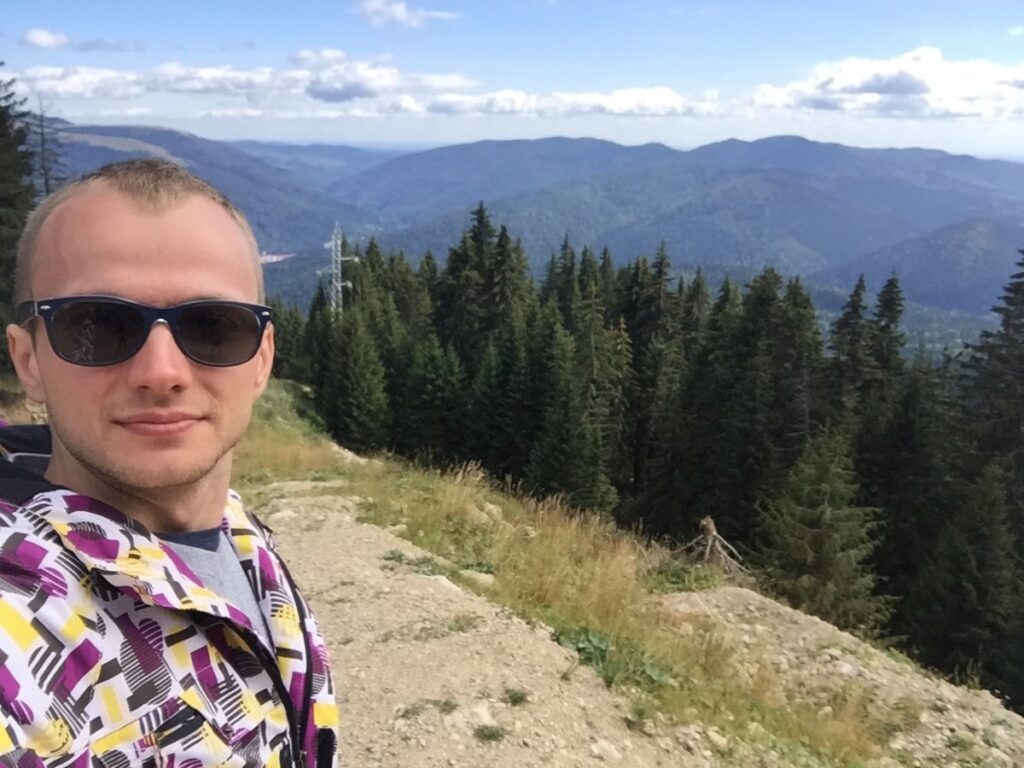
Marius Iliescu is the founder of Romanian Friend: a one-stop shop website with travel inspiration, tour ideas and practical info for those planning to visit Romania. His mission is to make sure people experience the best of his country while supporting responsible, inclusive tourism that helps local communities.

